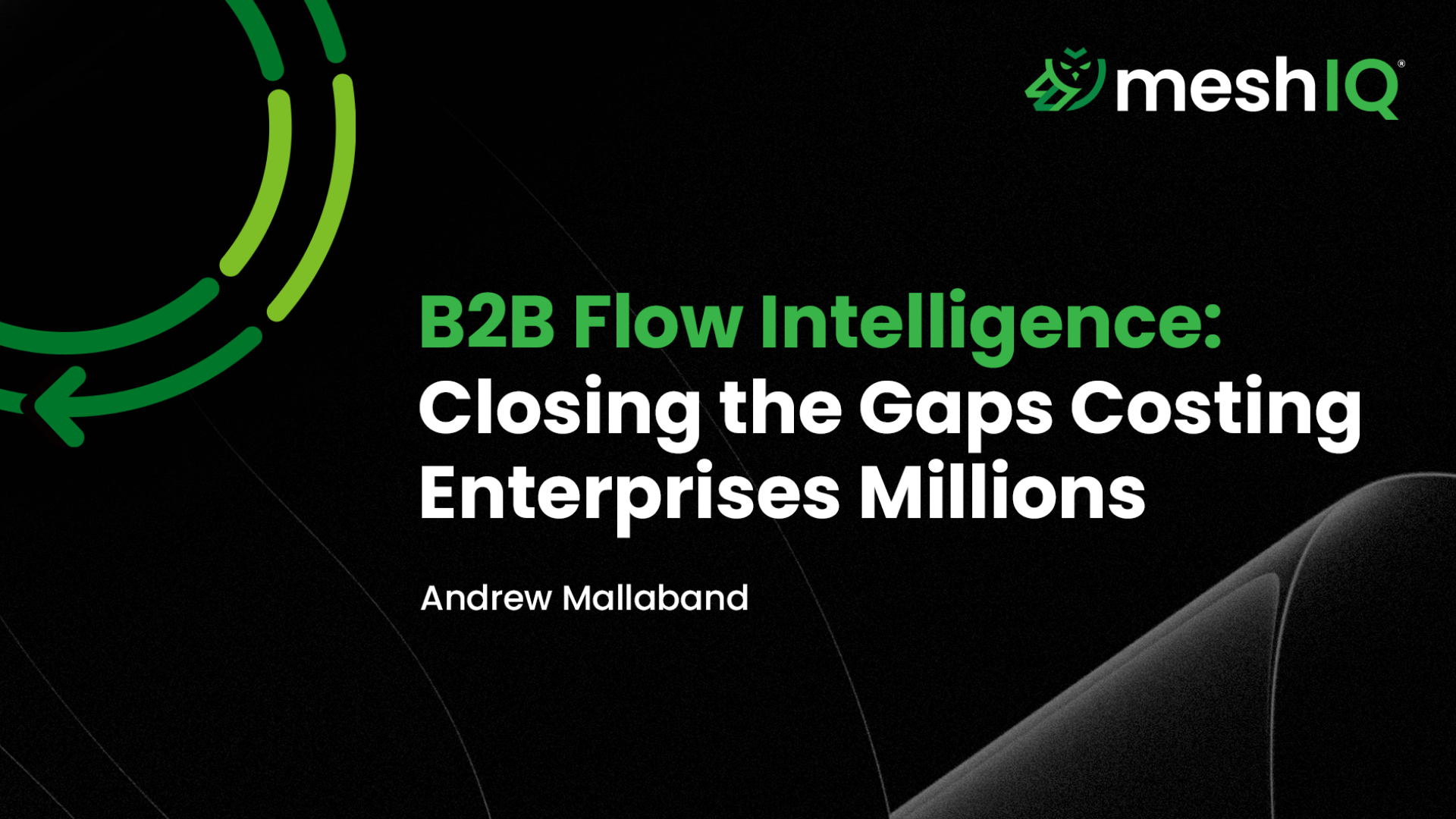Every enterprise runs on B2B transactions - the purchase orders, shipping notices, invoices, payments, and claims that form the heartbeat of modern commerce. When these flows align, shelves are stocked, supply chains move, and customers are happy. When they don’t, the cost is both immediate and compounding.
For decades, electronic data interchange (EDI) systems provided the backbone for these flows. Today, however, new layers of technology, from APIs and managed file transfer to event streaming and cloud-based ERP, have created a hybrid landscape that is faster but far more fragmented.
Each system captures part of the truth, but none can see the whole story. The result is a hidden loss that drains enterprise value every year.
The invisible cost of disconnection
Many organisations believe their current tools provide full visibility. Yet, in practice, most still struggle to reconcile transactions end to end.
Files move, APIs fire, and dashboards go green. But behind the scenes, purchase orders go missing, invoices don’t match, and payments stall without explanation.
The result is what experts increasingly call the assurance gap. This is the space between knowing something happened and proving it happened correctly and completely.
Across industries, that gap has measurable financial and operational consequences:
- Between one and five percent of EBITDA is lost each year through chargebacks, deductions, and disputes.
- Compliance teams spend weeks preparing audits because records cannot be reconciled across systems.
- Modernisation projects stall because leaders fear losing visibility during migrations.
- Partners and regulators lose trust when continuity cannot be demonstrated.
How confident are most enterprises that they could prove every transaction completed as intended?
Monitoring is not assurance
Most enterprises assume that their combination of monitoring and observability tools covers these scenarios. The problem is that these platforms only provide technical insight - not business assurance.
- EDI gateways confirm delivery but purge records after 30 days.
- API platforms show success codes but not whether transactions match downstream.
- Observability tools highlight performance metrics but not whether shipments, invoices, and payments align.
The gap between activity and truth remains.
“In complex B2B ecosystems, visibility alone isn’t enough, ” writes Andrew Mallaband. “Enterprises now need proof of continuity - the ability to demonstrate that every transaction completes, reconciles, and complies. ”
A new layer of assurance
This challenge has given rise to a new capability known as B2B flow intelligence, a unifying layer that provides cross-system visibility, reconciliation, and auditability.
It does not replace existing systems but overlays them to correlate, track, and prove the continuity of transactions across multiple technologies.
At the data layer, B2B flow intelligence correlates transaction identifiers, timestamps, and acknowledgements across systems to reconstruct an unbroken lineage from order to settlement.
At its core, B2B flow intelligence delivers:
- Unified lineage - linking all data from order to payment across EDI, APIs, ERPs, and partner portals.
- Real-time exception detection - spotting missing acknowledgements, duplicates, or mismatches instantly.
- Contextual routing - sending exceptions to the right resolver with full traceability.
- Immutable history - creating long-term, tamper-proof records for audits and regulators.
This combination turns reconciliation from a reactive burden into proactive assurance.
Industry snapshots
The effects of the assurance gap vary by sector, but the underlying cause is the same, fragmented visibility.
In retail, peak trading periods such as Black Friday reveal how fragile order-to-cash continuity has become. A single missing shipping notice can trigger millions in chargebacks and strained supplier relations.
In pharmaceuticals, a missing chain-of-custody record can delay shipments or regulatory approvals, disrupting both revenue and patient care.
In banking, complex payment modernisation programmes, such as the migration to ISO 20022, demand complete reconciliation across legacy and modern systems to avoid costly compliance breaches.
These examples highlight how a purely technical view of system health no longer guarantees business continuity.
What enterprises gain
Organisations implementing B2B flow intelligence are realising quantifiable outcomes:
- Leaner operations - 50 to 70 percent reduction in reconciliation effort.
- Margin protection - 1 to 5 percent of EBITDA safeguarded.
- Modernisation with confidence - ERP and API migrations delivered on time, without data loss.
- Audit readiness - 60 percent faster audit preparation with immutable lineage.
- Stronger trust - partners, customers, and regulators share the same source of truth.
CFOs see measurable protection of margin. CIOs gain confidence that transformation programmes will not disrupt business continuity. Compliance teams eliminate the manual scramble before every audit. The value is enterprise-wide.
From visibility to proof
The adoption of B2B flow intelligence signals a broader shift across industries, from monitoring systems to proving outcomes. Monitoring shows that something moved. Observability shows how it moved. Assurance proves it moved correctly. That assurance is fast becoming a board-level priority. It protects profit, strengthens compliance, and restores trust across the digital supply chain.
A growing movement
Several enterprise platforms are now developing capabilities in this space, bringing together data correlation, lineage, and governance.
One example is meshIQ, which has extended its operational intelligence suite to deliver cross-system reconciliation and assurance for hybrid B2B environments.
While approaches may differ, the direction of travel is clear. Enterprises no longer just need to observe. They need to prove.




Would you like to write the first comment?
Login to post comments